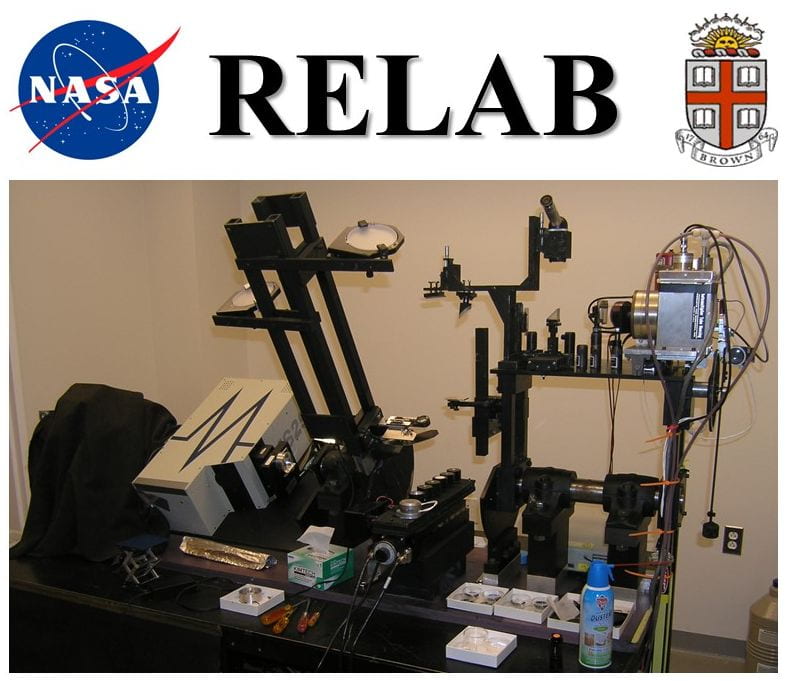Directional hemispheric (diffuse) reflectance spectra of lunar samples measured by John B. Adams (currently at Department of Geological sciences, Washington University, Seattle, WA 98195). These data were acquired using a Beckman Dk-2A, using both gold and smoked MgO as standards, during the 1970’s.
Examples of these spectra are reported in a series of science articles:
Adams, J. B. and T. B. McCord, Alteration of lunar optical properties: Age and compostion effect, Science, 171, 567-571, 1971a.
Adams, J. B. and T. B. McCord, Optical properties of mineral separates, glass, and anorthositic fragments from Apollo mare smaples, Proc. Lunar Sci. Conf., 2nd , 2183-2195, 1971b.
Adams, J. B. and T. B. McCord, Electronic spectra of pyroxenes and interpretation of telescopic spectra reflectivity curves of the moon, Proc. Lunar Sci. Conf., 3rd, 3024-3034, 1972.
Adams, J. B. and T. B. McCord, Vitrification darkening in the lunar highlands and indentification of Descartes material at the Apollo 16 sites, Proc. Lunar Sci. Conf., 4th, 163-177, 1973.
Adams, J. B. , C. M. Pieters, and T. B. McCord, Orange glass: Evidence for reginal deposits of pyroclastic origin on the Moon. Proc. Lunar Sci. Conf., 5th pp. 171-187, 1974.
Adams, J. B. and M. P. Charette, spectra evidence of highland rock types at Apollo 17: Evidence from Boulder 1, Station 2, Moon, 14, 483-498, 1975.
Original and Wavelength Corrected Directional Hemispheric Data
The Original Directional Hemispheric (diffuse) reflectance spectra have no corrections applied to the wavelength values.
The Wavelength Corrected Directional Hemispheric (diffuse) reflectance spectra have wavelength corrections applied based on interlaboratory comparisons for several samples. The function used was an inverse tangent relationship in energy space yielding a correction of between +10-15 nanometers in the .9 to 2.6 micron region. The error in the visible is negligible.
